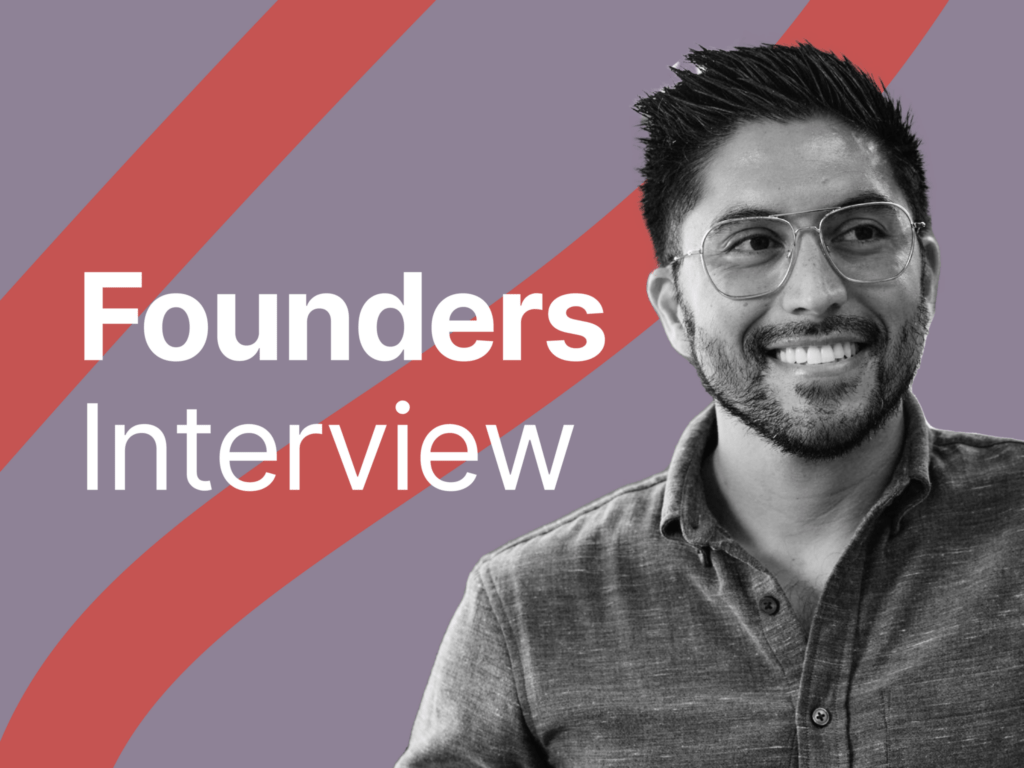A little bit about Eddie:
Eddie Simeón grew up in a multicultural family in Oakland, California. Throughout childhood, connecting to his roots meant cooking and eating foods from both his Mexican and Filipino heritage. So it made sense that he got his start at one of the Bay Areas trendiest fine dining establishments, À Côté; not in the kitchen, but behind the bar as a barback. It was there at the green age of eighteen that he was first introduced to the delightfully bubbly and bracing Bitters & Soda that he is best known for today. But before he launched Hella Cocktail Co. with his best pals in Brooklyn, NY, his career would take him on a full lap around the commercial media and entertainment space. MTV, Martha Stewart, ADWEEK are among the myriad of brands and websites he helped build as a Product Manager and PMP certified operations expert.
Today, he resides once again on the west coast, Los Angeles where he upholds his post as a founding partner of the craft cocktail company, Hella Cocktail Co. There, he heads up all things relating to Direct-to-Consumer (D2C), e-commerce, and underlying communication and supply chain systems. He believes that great brands define and own a clear space in which they plant their flag. Everyday, his goal is to remain curious and work to design that space at the intersection of consumer insights, company DNA, and categorical awareness, while utilizing the culture surrounding all of us.
This interview has been edited for brevity and clarity.
PART II
Trackmind: So, you had the idea for your company. What was the biggest challenge that you faced in the early years? Was it with packaging? Was it with distribution? Formulation? What was the biggest challenge?
Eddie: Well, it all boils down to how to fund it. I think the headline is operating capital. How do you get operating capital when you start from nothing and you start from zero? And then the sub-points underneath operating capital would include the things that you listed. We launched our company well before COVID, but we experienced stock-outs and supply chain pain like everybody else over the past three years. But in the early days, I think finding a way to get off the ground with operating capital was very difficult. We managed to do that by working for free, not paying ourselves for a very long time. So, every paid invoice went right back into the company in order to fund the inventory.
Then, a lot of sweat equity goes into growing the company in the early days. Doing those demos yourself. You got into Whole Foods in your territory? Fantastic. As the founder, you go do the sampling. The demo world has totally changed now and Whole Foods has many programs for sampling now. But back in the day, you used to just schedule one with the store manager and then show up. But that’s an example really being DIY. I think that there’s this, I don’t know, a trend right now or the allure entrepreneurially is that you can leverage social media to create a brand, a big brand. And then move on to create a large profitable company.
A couple of components to that. The unit economics are very challenging when it comes to paid media. My product, on average, people spend on average $60 on my website, but that’s because I offer free shipping at a certain price point. You have to create an economic model that incentivizes people to purchase at a certain level. But relative to apparel or beauty or baby products, my product is inexpensive.
So, if you are in food and beverage, if you are in CPG and your product retail averages anywhere between seven and $25, a direct to customer business that depends on paid media to acquire new customers is basically a non-starter in 2023. It essentially doesn’t work, which is what we’re all learning. It’s unfortunate that it took small brands like mine a year and a half to figure that out. Because what happened in that period of time was that Mark Zuckerberg and Jeff Bezos just fleeced us, basically. Especially on the Facebook Meta side. Your paid ads on Instagram and on Facebook, we all thought they were an important component of a marketing strategy. But what ended up happening was the acquisition cost was just too high for anybody to turn a profit.
So, back to being financially rigorous. If you’re like us, you take a look at that P&L and you’re like, I can’t run a company at negative 25%, negative 100% on the first one. It’s just not an option. So, I would say for people who are looking to get into the game now, of course you need to have a presence online, but create customer journeys that drive purchase into retail and really support your retail partners, because that’s where you will ultimately grow. The industry idiom, the wisdom from every investor and every, first of all, veteran in the business is, “go an inch wide and a mile deep”. That means open one door and support the heck out of that one door and prove velocity in that door before you reach past it. Don’t think that e-commerce is going to be the place to scale. Not this year.
Trackmind: Awesome. Since you started Hella Cocktail, what has been the biggest success that you’ve had?
Eddie: Amazing partnerships. Learning from some of the best in the industry. People who are informal mentors, because it’s actually a very small industry, the beverage business. You go to conventions and you meet people while you’re networking, and it’s always the same people. So, being welcomed into the beverage community as an upstart entrepreneur, people with an idea who want to build their own brand. People who’ve been around for a long time, they know how much you don’t know, or they know how far you have to go before you reach your goals. So, we’ve been fortunate to be mentored by some of those people.
Ultimately, it’s led to some incredible brand partnerships. We’ve worked with the likes of Tanqueray Gin, American Express, Delta Air Lines. Now, we’re moving on to work with other equity partners like Uncle Nearest Whiskey based in Tennessee, led by the amazing Fawn Weaver, who’s a luminary in the whiskey space. And now Pronghorn, which is the first venture-backed fund that specifically exists to elevate Black and Brown-led alcohol brands.
Trackmind: Oh, that is amazing. That’s really good. Well, that is definitely one of the biggest rewarding successes that you have. That is so good. That is really cool. What do you see for the company? Where do you see yourself in the next 10 years?
Eddie: Well, we’re just going to keep growing. I don’t think that the NA trend is going away, but I think it will evolve. Our motto is a cocktail culture for everyone. So, in 10 years, I imagine Hella being a household name when it comes to people choosing how to style their party, and what to serve their guests. Because we want to remain a flexible portfolio of flavors that people can use to be creative and express their identity and values through cocktails.
This year, I’m really excited that we’re going to be focusing on Black History Month as a celebratory occasion, as well as Hispanic Heritage Month. My background is both Filipino and Mexican. In September, we’re going to be focusing on Hispanic heritage. And I think in the coming years, we just want to amplify connecting to our roots and allow for other people to connect to their own roots through cocktails.
Trackmind: That’s amazing. Oh, that’s so nice. But that actually brings me to this one question. I was watching this event the other day about just 2023 trends. One of the biggest things that they said is that Gen Z, they’re the gatekeepers of what’s happening in the society. I don’t want to say good, bad, but keeping a check on things when they get a little too offensive to anybody. So, how is Gen Z playing a part in your brand?
Eddie: Well, Gen Z is certainly driving a lot of the content strategy right now when it comes to how you create a catalog of content as a brand. There’s a specific visual narrative that’s more engaging than others on social media. I think the algorithms that drive TikTok and Instagram are responding to customer wants, customer behavior. I think a lot of that is being fueled by the customer wants and customer behaviors of that specific generation. For example, utilizing soundbites to drive what your video looks like. I think that’s a behavior fueled by how Gen Z likes to consume content on social media and how ideas catch on. So, you heard me mention Negroni Sbagliato. It was huge in the LGBTQ community first, right?
Probably mostly driven by queer, young people who just love that sound bite and were doing it themselves with Negroni Sbagliato. From a marketing perspective, you have to be aware of those trends and know, from a technical perspective, how to get on board with those trends.
From a productization standpoint, when we reformulated our margarita mix to be spicier and renamed it from Spicy Margarita to Habanero Margarita, we saw a huge jump in conversion. I think that the story there is that people want to know what goes into their products. People want to understand what ingredients are in here. But they also don’t want to buy something they think they can make themselves. So, when we introduced habanero as the key component, it was like, oh, that’s a variation in a margarita that I don’t know how to do. So, let me give that a shot. I think that tapping into what flavors are on trend, what people are really interested in, you always take Gen Z into consideration.
You think about it both on how to make it, what it should look like, what it should taste like, what should be in it, down to how you talk about it. I’ll say Gen Z doesn’t have the biggest spending power as a generation, and so there’s a balance. People who are older and more professionally established are going to be your better customers when it comes to spending. But people who are more engaged on social media and share and repost stuff are going to be helpful for your brand. Right? And so, you have to create symbiosis between those two types of customers.
Trackmind: Between those two. Yeah, that is so true. That is so well said. Lastly, what advice do you have for people who want to get into the business? I know you already mentioned a little bit at the beginning, but one thing that you’ve learned that you really want to let other founders know about.
Eddie: I won’t say don’t do it. I think that’s a fun one to say, like what did the seasoned actor say to the budding young starlet? Go do something else. This is a very difficult business, especially if you’re going to bootstrap your company. Some people have the benefit of not having to pay rent, for example, for a while. So, if you’re given the opportunity to defray your personal finances in order to focus 100% on your business, that’s a good start. Once you get to a point where you’ve balanced your portfolio personally when it comes to risk, your risk portfolio, so how much can I risk in order to focus 100% on my business? You have to focus on product market fit.
I think people have amazing ideas and then create products that they think realize that idea, and aren’t willing to respond to customer feedback because they’re so enamored with their idea. Our responsibility as entrepreneurs is to maximize value for customers. If you’re not willing to revise your ideas in order to optimize value for your customers, then you’re failing them. If you’re not able to create value for your customers, frankly, you’re not going to be able to command a higher price.
So, my advice for upstart entrepreneurs is to come up with a product idea that costs more than your competitor. If you look at Amazon, if you go to Erewhon, if you go to Whole Foods and you look at the cabinet where your product is supposed to be, look at the retail price of that item and imagine what you would have to do in order to launch a competitive item that costs more than what’s already on the shelf. The reason why you want it to cost more is because you want to buffer yourself. You want to be able to make mistakes. You want to be able to share more margin with people. You don’t want to price yourself down. But you’re not going to be able to sell an item that costs more than the incumbent if it doesn’t have more value.
That’s the creative challenges of entrepreneurs. How do you take something that someone already loves and make it even better or extended? There’s a few simple examples of that that have happened in the beverage industry recently. Prebiotic beverages. Poppy, Olipop, now Wild Wonder, who’s an amazing new entrant into the prebiotic space. They took this idea of kombucha, which was a probiotic live culture beverage, which is weird and fermented and only for hippies or yoga people. And they made it more commercial by adding an ingredient that was prebiotic, and taps into the full flavor nostalgia of regular commercial sodas. What they did is they created a product that delivered so much gut health that people are willing to spend four, five, $7 on a single can. So, how can you do that for your idea? How can you make your product justifiably more expensive than what’s already in the store?
Trackmind: Yeah. That is amazing. That is so much information and such insightful information. Thank you so much.
Eddie: Great.
Trackmind: This has been an amazing, amazing conversation, Eddie. Thank you so much for taking the time.
Eddie: Thank you.
Enjoying our Feature Series so far? Check out other interviews and follow us on Instagram and LinkedIn to stay connected and see more stories of incredible business leaders like Eddie Simeón.



